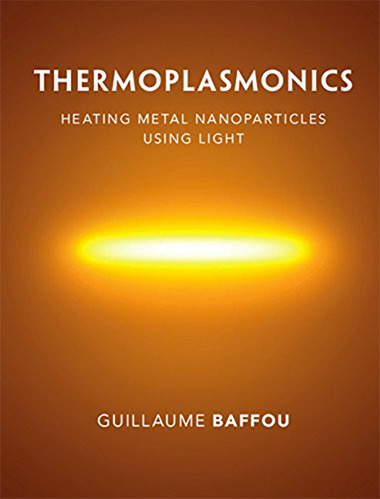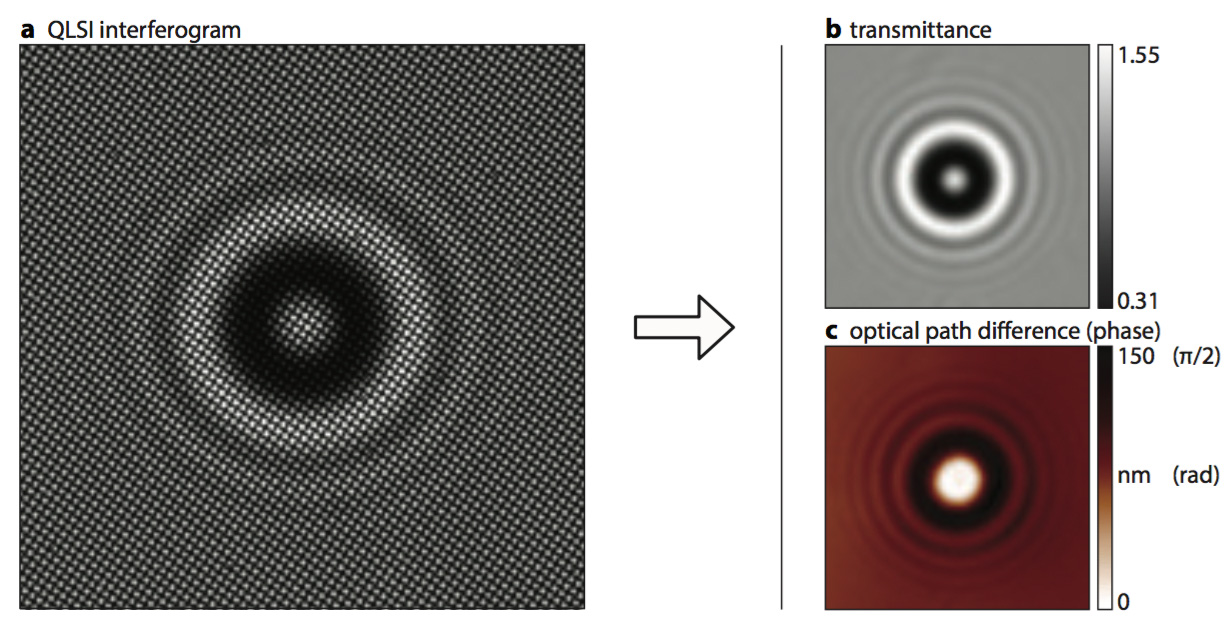... and photothermal effects
- [22] Laser & Photon. Rev. 7, 171 (2013)
- [38] Thermoplasmonics, Cambridge University Press, G. Baffou (2017)
Under illumination at their plasmonic resonances wavelength, gold nanoparticles behave at ideal and efficient nanosources of heat, remotely controllable by light. The concept is at the basis of a research field called Thermoplasmonics [22,38].
Such tools enable the investigation of thermally induced processes at the nano and micro scales. And as any field of science feature thermally induced processes, the range of application of thermoplasmonics is limitless.
Following this idea, we are carrying out research in thermoplasmonics applied to physics, chemistry and cell biology, in order to elucidate new fundamental processes and imagine new applications of nanosciences.
... and quantitative phase imaging
Since 2011, we are extensively using a quantitative phase imaging technique called Quadriwave Lateral Shearing Interferometry (QLSI). This techniques enables the imaging of the intensity and phase of a light beam from the acquisition of a single interferogram image, with high spatial resolution (diffraction limited) and high wavefront sensitivity (wavefront distortion of lass than a nm).
We have shown that QLSI appears as a powerful tool in nanophotonics, as it enables:
- [17] ACS Nano 6, 2452 (2012)
- temperature microscopy in thermoplasmonics systems [17],
- [39] ACS Photon. 4, 3130-3139 (2017)
- optical characterization of 2D materials (mapping of the optical complex conductivity) [39],
- [46] Optica accepted (2020)
- full characterization of the optical properties of nanoparticles from a single interferogram image (complex optical polarizability, and all the optical cross sections [46].
... and theory
- [27] Nanoscale 6, 8984 (2014)
- [43] Sci. Rep. 9, 4644 (2019)
- [33] J. Phys. Chem. C 119, 25518 (2015)
- [36] Sci. Rep. 6, 38647 (2016)
- [14] Phys. Rev. B 82, 165424 (2010)
- [15] Phys. Rev. B 84, 035415 (2011)
- [28] Phys. Rev. B 90, 035439 (2014)
- [24] ACS Nano 7, 6478-6488 (2013)
Along with the experimental research axes listed above, we also often focus on more fundamental researcher by publishing purely theoretical or numerical articles in nanophotonics and plasmonics, e.g. in nanoscale temperature shaping [27,43], search for more efficient plasmonic materials [33,36], dyadic Green's formalism [14], DDA and BEM for computation in plasmonics and thermoplasmonics [36], pulsed [15] and harmonic [28] optical heating of nanoparticles, photothermal collective effects [24], etc.



